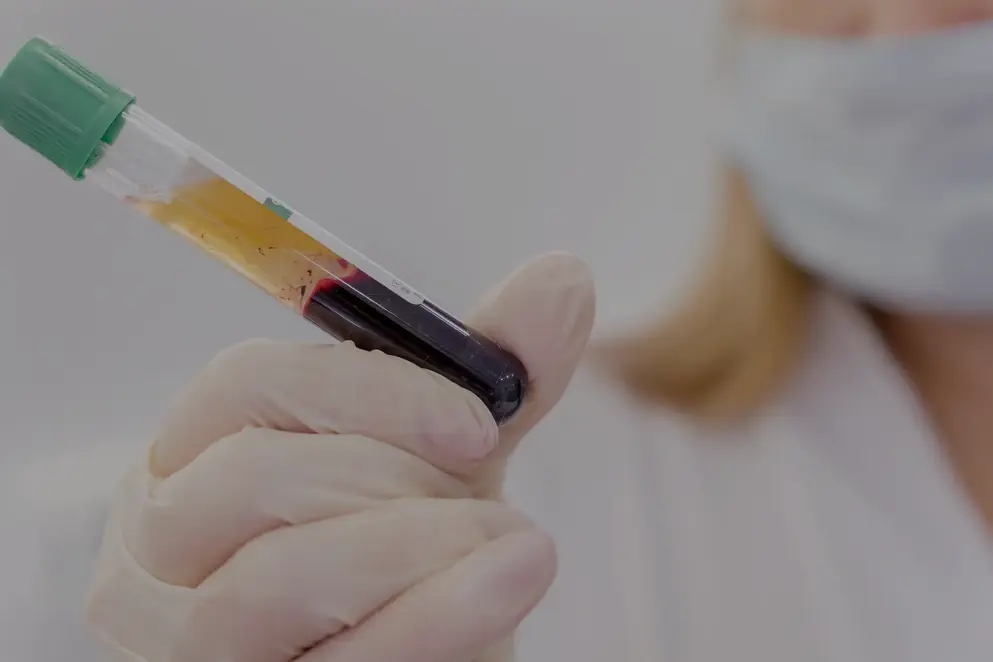Reblozyl studies evaluating treatment of anemia in myelofibrosis-associated anemia presented at American Society of Hematology (ASH) meeting .BMS + Acceleron Pharma
Bristol-Myers Squibb Company and Acceleron Pharma announced data evaluating the erythroid maturation agent (EMA) Reblozyl (luspatercept-aamt) in patients with anemia associated with a range of serious and rare blood diseases were presented at the 2019 ASH Annual Meeting in Orlando, Fla.
Data from investigational uses of luspatercept-aamt included the initial results from a phase II study in myelofibrosis-associated anemia. Presentations also included updated results from two pivotal phase III studies presented at last year�s ASH meeting�the MEDALIST study in adult patients with anemia associated with very low-, low- and intermediate-risk myelodysplastic syndromes (MDS) who have ring sideroblasts and require red blood cell (RBC) transfusions, and the BELIEVE study in adult patients with anemia associated with beta thalassemia who require regular RBC transfusions.
Phase II Results in Myelofibrosis-associated Anemia ; Seventy-six patients were enrolled in the phase II study in multiple cohorts of patients including two groups with anemia only (hemoglobin level equal to or below 9.5 grams per deciliter (g/dL) in a 12-week period prior to the first dose) and without concomitant ruxolitinib (Cohort 1; n=22) or with concomitant ruxolitinib (Cohort 3A; n=14). Two other groups included transfusion dependent (TD; received 2-4 RBC units per 28 days in the 12 weeks prior to the date of the first dose) patients without concomitant ruxolitinib (Cohort 2; n=21) and with concomitant ruxolitinib (Cohort 3B n=19). Patients in Cohort 3A or 3B were required to be on a stable dose of ruxolitinib for at least 16 weeks prior to initiating luspatercept-aamt. All patients received luspatercept-aamt at a starting dose of 1 mg/kg subcutaneously in three-week treatment cycles and dose increases were allowed up to a maximum dose level of 1.75 mg/kg.
For anemia-only patients (Cohorts 1 and 3A) , the primary endpoint was a hemoglobin (Hb) increase of at least 1.5 g/dL from baseline for at least 12 consecutive weeks at every assessment within the first 24 weeks on the study, in the absence of any RBC transfusions. An additional endpoint was the proportion of patients achieving a mean Hb increase of at least 1.5 g/dL over any consecutive 12-week period in absence of RBC transfusions. As of the clinical data cutoff (August 5, 2019), 14% (3/22) and 21% (3/14) of anemia-only patients met the primary endpoint in Cohorts 1 and 3A, respectively. Additionally, 18% (4/22) of Cohort 1 and 64% (9/14) of Cohort 3A patients achieved a mean Hb increase of at least 1.5 g/dL from baseline over any consecutive 12-week period.
For patients receiving RBC transfusions (Cohorts 2 and 3B) , the primary endpoint was RBC transfusion independence (RBC-TI) for at least 12 consecutive weeks within the first 24 weeks of the study. An additional endpoint was the proportion of patients demonstrating at least a 50% reduction in their transfusion burden from baseline (minimum 4 RBC units) over at least any consecutive 12-week period.
In Cohorts 2 and 3B , 10% (2/21) and 32% (6/19) of patients achieved the primary endpoint, respectively. Additionally, 38% (8/21) of Cohort 2 and 53% (10/19) of Cohort 3B patients achieved at least a 50% reduction in RBC transfusion burden from baseline (minimum 4 RBC units). Four percent (3/76) of patients had grade 3 or higher treatment-emergent adverse events (TEAEs). The most commonly occurring TEAEs of any grade greater than 3% were hypertension (12%), bone pain (9%) and diarrhea (5%). Treatment discontinuations as the result of TEAEs occurred in seven (9%) patients. There were no treatment-related deaths.
As a result of the phase II study, Bristol-Myers Squibb and Acceleron plan to move forward with the pivotal phase III INDEPENDENCE study in patients with myelofibrosis-associated anemia who are being treated with JAK inhibitor therapy and who require RBC transfusions. The study is expected to open in 2020.
Updated Results from the Phase III MEDALIST Study : In an assessment of efficacy and safety, updated results from the pivotal phase III MEDALIST study of an investigational use of luspatercept-aamt in patients with IPSS-R very low-, low- or intermediate-risk MDS with ring sideroblasts who require regular RBC transfusions were presented. In the study, 229 patients were randomized 2:1 with 153 patients receiving luspatercept-aamt. This updated analysis measured the achievement and number of individual periods of RBC-TI of at least 8 weeks throughout the course of the study. Additionally, clinical benefit (RBC-TI) of at least 8 weeks and/or modified hematologic improvement-erythroid (HI-E) was also assessed, along with the total duration of the clinical benefit, which was defined as time from achieving clinical benefit until discontinuation due to loss of benefit, adverse events or other causes. In the analysis, the median baseline RBC transfusion burden for both the luspatercept-aamt and placebo arms was 5 units per 8 weeks. As of the clinical cutoff (July 1, 2019), 47.7% (73/153) of luspatercept-aamt patients and 15.8% (12/76) of placebo patients achieved at least one episode of RBC-TI lasting at least 8 weeks at any point in the study. Sixty-nine point nine percent (51/73) of patients who responded to luspatercept-aamt experienced multiple episodes of at least 8 weeks of RBC-TI at any point, interceded by occasional transfusions. The median total duration of clinical benefit was 92.3 weeks for luspatercept-aamt responders (n=98) and 26.8 weeks for placebo (n=20), with 26.8% of luspatercept-aamt-treated patients remaining on treatment. No placebo-treated patients remain on treatment. The median treatment duration for all RBC-TI responders was 109.1 weeks for luspatercept-aamt-treated patients and 53.6 weeks for patients on placebo.
Adverse events (AEs) occurring more frequently with luspatercept-aamt compared to placebo were fatigue, asthenia and headache. These occurred during cycles 1-4 and were mainly grade 1 or 2, with the incidence decreasing over time. Progression to acute myeloid leukemia was similar between the luspatercept-aamt (2%) and placebo (2.6%) arms.

